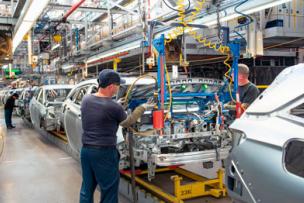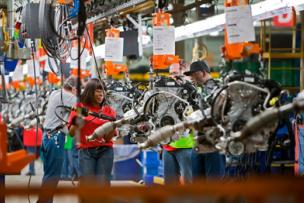A cutting tool or machine part runs its course, so you purchase another––right? Yes and no. If you really want to control MRO spend madness—using high-cost labor for low-cost parts—there are proven methods you can employ, explains MSC’s Darr Greenhalgh.
Taking control of indirect spend in Maintenance, Repair and Operations can be downright difficult. Why is that? Because MRO can stretch pretty far across the production floor. For one, the variety of machinery, tooling, safety equipment and janitorial-supply needs of a manufacturing plant floor can be extensive.
Yet, it’s more than the wide range of product and part needs; it’s also about when those products and parts are needed the most—often at critical points in production where stopping and starting equate to dollars lost and customer delivery times delayed. Despite those critical MRO moments, most companies do not have a good handle on MRO costs because of all the immediate and diverse supply needs on the shop floor, find MRO and supply chain experts.
“Ask any plant worker how important their MRO suppliers are, and they will tell you a story about how much it will cost if a machine goes down … ” says Michael Croasdale, senior project manager at Source One Management Services, in an article with Spend Matters. “The diversity of the products that fall under the category, the lack of spend visibility at the SKU level, and the diversity of suppliers across regions makes proper sourcing and supplier management difficult.”
Yet, there is another big challenge in MRO: the disparity between how procurement teams purchase supplies and how those on the shop floor need to operate. Some level of flexibility is necessary, but it has to be balanced against costs. Procurement teams often struggle with managing MRO in this way, Croasdale tells Spend Matters:
“To start, facilities typically don’t speak to each other. They use different suppliers within the same category even for the same exact items or services, and there is limited standardization of manufacturers and/or processes and no national contracts in place. This creates a number of inefficiencies—the organization is not able to achieve economies of scale and because of it, suppliers often are not dedicating the attention that the organization deserves.”
So how do manufacturers get a handle on MRO costs? For starters, it helps to have a deep and detailed understanding of MRO costs as they relate to business goals and metrics on capital and asset costs. For that, you need information, says Darr Greenhalgh, the senior manager of customer business solutions for MSC Industrial Supply. In the end, this data, which is often not readily available or easily captured, is what helps companies find the true Total Cost of Ownership within MRO.
The procurement and production disparity does not end there, Greenhalgh says. There’s also too much of an emphasis on reducing the cost of piece price and individual purchase order management—rather than focusing on total cost of ownership drivers such as inventory control, automated supply replenishment, or using the right tools and parts to gain greater cost reduction opportunities.
Here, we sit down with MSC’s Greenhalgh, who has 30-plus years of experience in supply chain and manufacturing—which included major stints at Raytheon and Avaya—to discuss how he advises customers in resolving TCO issues in the real world and how manufacturers can better manage their MRO.
When trying to help resolve Total Cost of Ownership issues, what is the overarching approach you take?
Greenhalgh: Our approach is to start with understanding our customers’ supply chain needs first in a process-driven approach. What are their main goals and pain points? What issues do they experience today? We begin with a documented, step-by-step analysis of these needs conducted on-site through a Business Needs Analysis. This is a functionally driven approach with a focus on process, systems, pain points and relevant data. However, once we dive into that analysis, oftentimes it requires that we make a more specific diagnosis of the plant floor.
What exactly does this BNA consist of?
Greenhalgh: Our BNA, as we call it, has five distinct steps to it. The first step starts with upper management. They are the decision-makers, so it’s critical we get their input. We ask about what their site goals are from a supplier. For the next step, it’s a full-up process-driven evaluation for how they buy their indirect materials and all the different ways they buy it. In the third step, we then tour the facility. During the fourth step, we more deeply interview relevant plant floor and office supervisors who are involved with MRO supply. In the last step, the customer provides us with data that helps us understand their MRO supply chain and their categories of spend.
Would a BNA cover the same types of areas for all customers?
Greenhalgh: Yes and no. Of course every customer wants cost reduction––it’s central to anything we do. But we also recognize that those customers are all unique in their main needs and issues. When we conduct a BNA, that tends to uncover a lot of big issues that allow us to assign priorities. It’s not as easy as saying they simply overbuy––we have to pinpoint the root cause of that.
Would you mind going into a bit more detail about a specific customer example?
Greenhalgh: One customer that comes to mind is a large U.S. aerospace and metalworking customer we work with, where we recently conducted a BNA. Starting after the first step with their decision-makers to learn their site goals, we evaluated their buying processes through a whiteboard exercise. We toured their facility and the company provided us with data to analyze. For this customer in particular, we found a number of different areas for improvement.
Their issues ranged from no visibility into their janitorial supplies to an ineffective MRO inventory management that had little visibility. But the biggest issue was tooling. They had a problem with re-grinds, which dulled drills beyond the point of use. They didn’t have a good system in place to perform these activities, and they also didn’t know how to perform a complete inventory on what was needed to begin with––or what had already been re-ground. We fine-tuned adjustments for them and taught them how to get things under control with various inventory management solutions. Our solutions delivered a 10 percent TCO savings.
In regard to pricing, how specifically did your team address those issues?
Greenhalgh: After the BNA recommendations were implemented, they asked us how they could reduce their cost of tooling for a specific application. We realized that there were different options we could offer, and test, that could accomplish their goals. After our analysis, we then introduced a new tool––a high-usage drill for their specific application. The life of the new drill helped to drive up productivity and reduced drill consumption. This resulted in a 15 to 18 percent cost savings just on this tool alone, which was in addition to the 10 percent savings they were receiving from the BNA recommendations.







Talk to Us!
Read on better mro--total cost of ownership prior to reading the above article. The average figure of $207 per p.o. was presented with some companies experiencing average costs as high as $294 per p.o. I cannot find the original article with this data--just after I presented them to a customer moments ago. Can you send or direct me to that particular information. I just read it in the past day. Thank you for your support.
190Very Informative post. Thanks for sharing your knowledge with us.
EXIM Engineering Inc | MRO Products
198Leave a reply
Your email address will not be published. Required fields are marked *